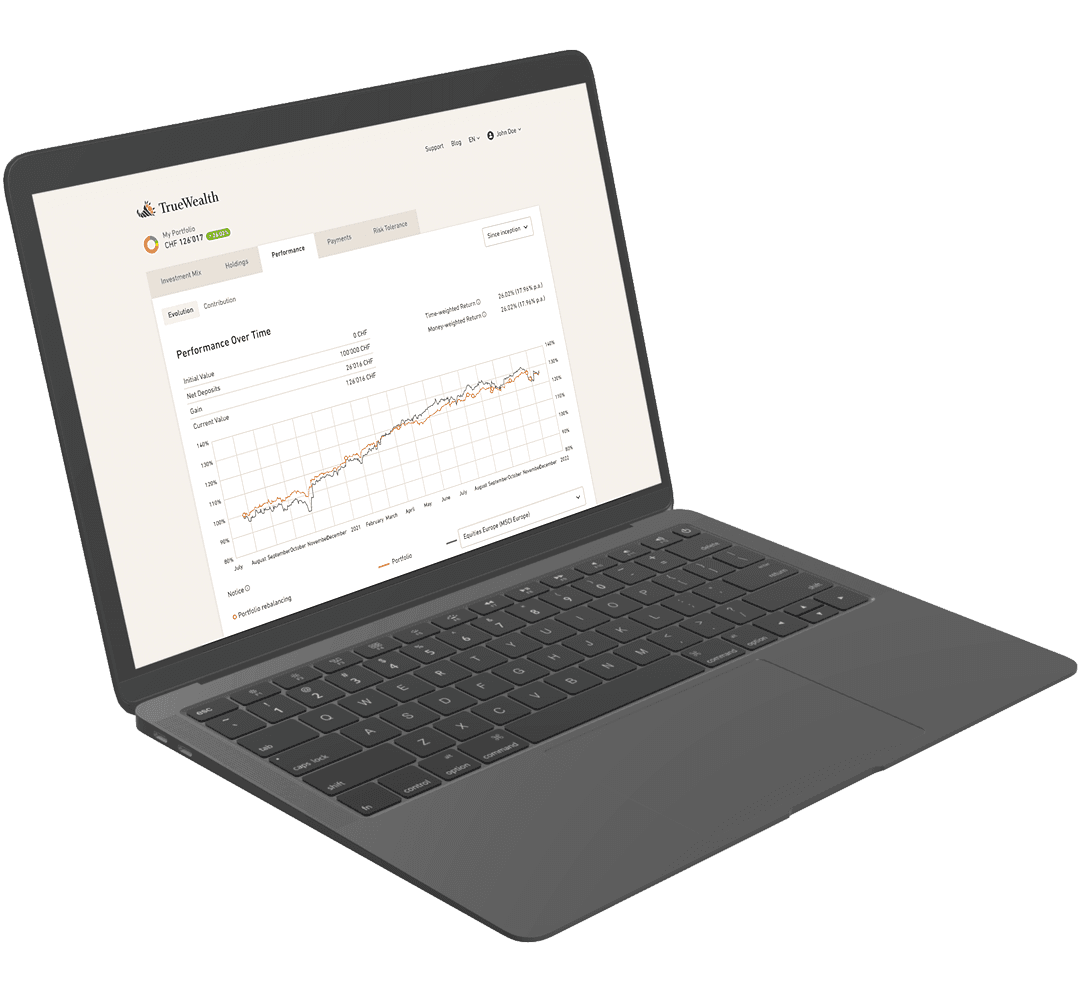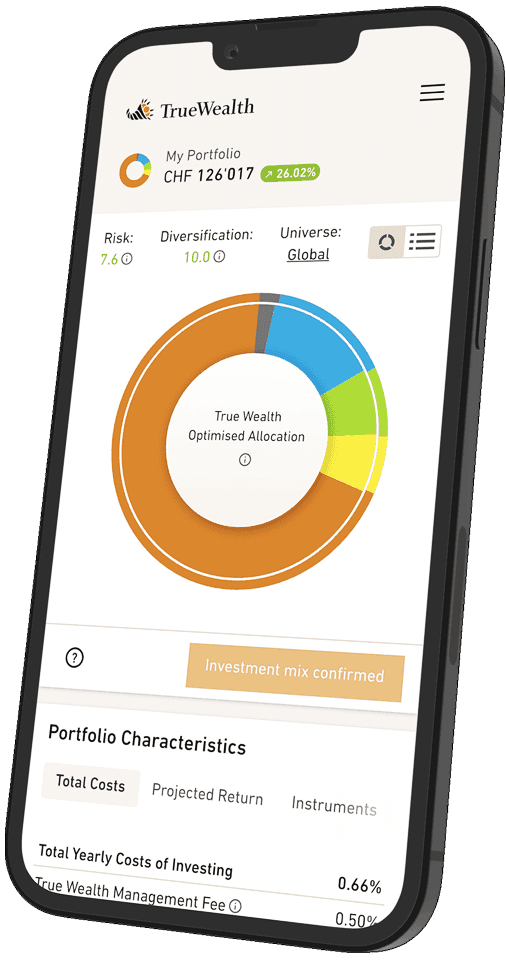
«Pay yourself first. That's the only way to build your wealth.»
Three times ten percent: how to save for a better future
Wealth makes dreams come true. Or just makes you feel good. But how do you build wealth when you don't have any?
Why can he afford such a great trip again? How did they actually pay for their house? How can she live without a job for six months while she founds her company? If you don't have a fortune yourself but would like to have one, it's easy to ask yourself questions like these.
Some people are able to fulfill their dreams because they were born rich. However, most of us were not born with money. Which doesn't mean that we have to give up our dreams. We just need to be a little more strategic if we want to achieve them.
Many people set out to save money. Almost as many fail to do so month after month. Because the plan usually looks like this: I'll put what's left over at the end of the month on the high side. But what's really left over is usually very little – if anything at all. For those who see saving in this way, the very thought of it quickly becomes frustrating.
It's better to face facts: Saving always means doing without. But saving is also a decision. The decision to have more in the future. For example, not to order lunch from a takeaway today. Instead, you'd rather have a good meal later on a trip.
You must make this decision your priority. Pay yourself first. This is the only way to grow your wealth. And month by month: when you receive a new salary, build up reserves first.
It's best to save automatically
Putting money aside first – it's technically quite simple. You set up a standing order with your bank and your money is already in a different account. It is then no longer available for daily expenses. It's as simple as that. And your savings plan should also be simple so that you can stick to it.
Three times ten percent
The only question is: how much? Here, too, we make life easy for ourselves. I suggest a simple rule of thumb to get you started. Save thirty percent of your gross income, divided into three equal installments of ten percent each. (Later, when you have kept up your savings plan for a few months, you can adjust the values, perhaps they will then suit your personal situation even better. For a start, the rule of thumb of three times ten percent should be good).
But first, let's think briefly about the reasons why you are saving in the first place. This includes everything that will make your life better in the future. Including your dreams. But not only. These three topics are important when building wealth:
- Your next year. You save ten percent for this.
- Your big goals. You invest ten percent for this.
- Your retirement. This is why you put ten percent into your pension.
Saving for next year
Are you going on vacation? Are you buying presents before Christmas? Do you need to replace two teeth or four brake disks on your car? You don't need money for many things every month. But you will at some point during the year.
Set aside ten percent of your income for next year's emergencies and luxuries. You will need this money over the course of the year. You should be able to access your balance quickly. A classic savings account is ideal for this. This is highly liquid – but you can hardly expect a real return.
Investing for big goals
Do you want to buy a house? Take a trip around the world? Start a company? Perhaps you already know today what big goal you want to pursue with your assets. Perhaps your dreams will only become concrete later. Then it's a good feeling to be ready for whatever may come.
Put ten percent aside for your bigger goals too. Because you won't need the money immediately, you can think longer term. Over a medium or longer time horizon, it's not just your own deposits that contribute to your investment success. But also the returns you achieve along the way. And which you can reinvest year after year. This is how compound interest works its magic (calculate the effect with our compound interest calculator).
You need the right form of investment for this. In a professional wealth management company like True Wealth, you will find optimized proposals for medium to long-term investments. Pay in monthly or set up a standing order. And watch your invested assets grow.
Provision for retirement
At some point you will stop working in your profession. Then you will receive AHV, but it won't be enough to live on. This is another reason why you build up wealth. The state likes this and therefore favors your payments into the pension fund and 3rd pillar for tax purposes.
So put aside ten percent for your old age. Your employer automatically pays part of this into the pension fund. You invest the rest yourself in the third pillar (for employees, the maximum is currently CHF 7056 per year).
With True Wealth, Pillar 3a is just a click away from wealth management and costs no management fees. We will also open up to five 3a accounts for you over the years so that you can also reduce tax progression on lump-sum withdrawals.
One standing order per target account
Firstly, the savings account for your liquidity requirements in the coming year. Secondly, the investment account for your investments. Thirdly, your third pillar. This is manageable. So define the three accounts to which you will make your automatic transfers each month. Determine the amounts and set up a standing order for each account. That's it.
70 percent for each day
After your reserves have left your salary account, you still have 70 percent of your income available for everyday expenses. And that's a good thing: You can't accidentally spend what's no longer in your account. Divide the 70 percent for daily needs as follows:
10 percent pocket money. Let's start with the things that are fun to spend. Spend what makes you happy. Would you rather go out for a really nice meal? Would you rather buy a few more nice shoes? The main thing is that you make your choices consciously (and don't spend more than 10% of your income on them).
60 percent essentials. You should be able to pay for everything you need with 60% of your gross income. These are fixed costs such as rent, taxes and insurance. As well as all other bills. And your regular expenses for food and basic clothing.
How to create your wealth
The average Swiss household is able to cover its basic living expenses with 60 percent of its disposable household income. This is according to the 2020 household budget survey by the Federal Statistical Office and is roughly in line with previous years. The average disposable household income (after taxes, social security contributions and health insurance premiums) is CHF 81'000.
The higher your income, the more you should be able to put aside each month. And if your income is not (yet) that high, then you can set yourself more ambitious goals than the average Swiss person.
Your assets will grow. And your future will thank you for it.
Links
- Federal Statistical Office (FSO): Household Budget Survey 2020
An earlier version of this article was published on the 13.11.2015
About the author

Founder and CEO of True Wealth. After graduating from the Swiss Federal Institute of Technology (ETH) as a physicist, Felix first spent several years in Swiss industry and then four years with a major reinsurance company in portfolio management and risk modeling.

Ready to invest?
Open accountNot sure how to start? Open a test account and upgrade to a full account later.
Open test account